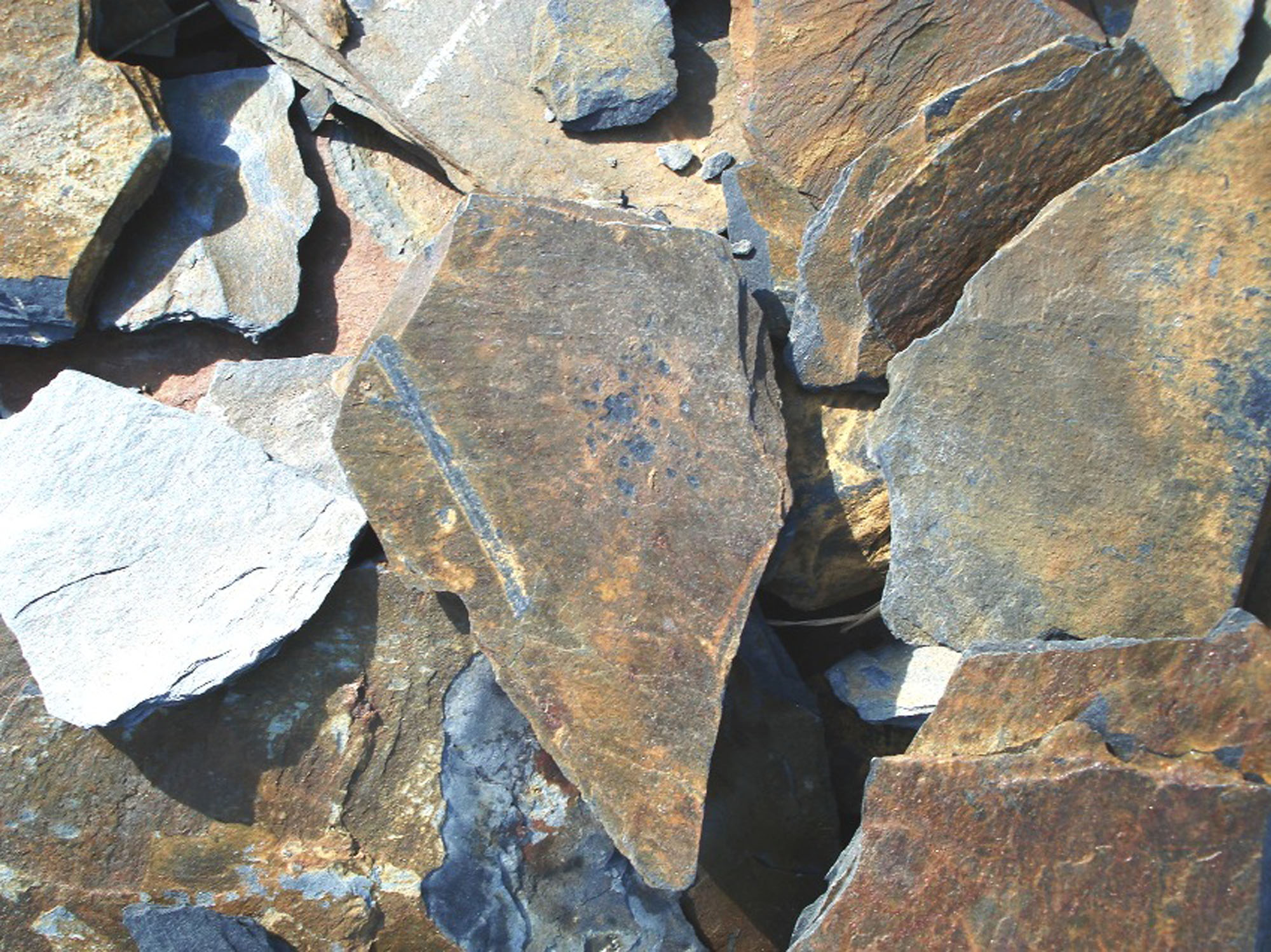The bay at Porthgain is eroded out of Ordovician shales, with the headlands on either side of it composed of more resistant igneous rocks. Although huge piles of shale can be found on the clifftop, fossils are sparse.
DIRECTIONS
♦ Park in the free car park in the centre of the village. From here, head towards the harbour. You will see massive brick-built hoppers on the harbour-side, which were used during the nineteenth and early twentieth centuries for a variety of rock-based industrial applications. There is an information board at the base of the hoppers, which provides a fascinating insight into their history and the village’s industrial past.
♦ At the end of the hoppers, you will come to a small house with steps leading upwards next to it. Climb these to the top. There are excellent views of the industrial ruin as you ascend.
♦ At the top, go through the stile and follow the path for about 50m. You will come to a large area covered in broken masses of shale. This is the main fossil hunting area.
♦ The area of shale stretches to the cliff edge, so take care.
♦ Ref: 51.94788°N, 5.18499°W
PROFILE INFO
FIND FREQUENCY: ♦ – There is a vast quantity of shale to look over, but fossils are very infrequent. However, the location is extremely beautiful and the village has a fascinating history of exploiting the local rocks for road stone, roofing tiles, brick making and so on. The most striking legacies of this industry are the huge brick-built hoppers that are situated adjacent to the harbour.
CHILDREN: ♦♦♦♦ – The walk up to the fossil hunting area is short but the steps that must be climbed are steep. The piles of shale stretch right up to the cliff edge, which is unguarded. Therefore, younger children should be supervised at all times and kept to the path.
ACCESS: ♦♦♦♦ – Free parking can be found in the centre of the village. Local shops and businesses are nearby, as are public toilets. The walk to the fossil hunting area is short, but steep at the steps.
TYPE: – The piles of shale found at Porthgain are another reminder of the village’s industrial past. They are quarrying waste from its roof tiling phase, which occurred between 1850 and 1910.
FOSSIL HUNTING
If you find any fossils here, you can count yourself lucky. The shale at Porthgain is practically barren and an hour of searching may reveal no fossils at all.
Graptolites are much more abundant at Druidston Haven to the south, but Porthgain is such a fascinating and beautiful location that it is recommended nonetheless. There is a huge amount of shale to look through. Look on the surfaces of the bedding planes of the pieces of rock and, if you are very lucky, you may find a graptolite.

GEOLOGY

SAFETY
The biggest danger at Porthgain is the proximity of the piles of shale to the edge of the cliff. It can also be windy here, so do not go too near the edge. Mobile phones may not have a signal at this location. Therefore, it is especially important that you tell someone where you are going and what time you will be returning.
EQUIPMENT
Most fossils can be collected from moving the shale around. Therefore, no equipment is necessary, but a geological hammer, a chisel and safety glasses may be helpful to split the shale.
ACCESS RIGHTS
Conservation area. Please treat the old buildings with respect.
It is important to follow our ‘Code of Conduct’ when collecting fossils or visiting any site. Please also read our ‘Terms and Conditions‘
LINKS
♦ Buy Fossils, Crystals, Tools
♦ Location Discussions
♦ Deposits Magazine
♦ Join Fossil Hunts
♦ UK Fossils Network


















